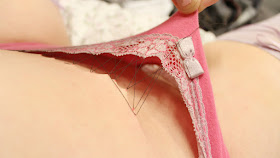The third edition of the festival will be held in November 2015 and will be wrapped around the theme of TESTOSTERON. The Main Programme in Warsaw galleries will feature thirteen individual projects selected through a competition addressed to visual artists. The main plot of the show is aimed to visually analyze and put the idea of masculinity into question.
 |
| Warsaw Photo Days 2015 |
We asked Katarzyna Majak, from the jury panel and a person behind the festival, to share her view on the theme of the festival, artists selected and their work:
KM: We live in the times of crisis of the narrative. This statement is probably not particularly revealing, though still surprising may be tracking the variety of its consequences. This is where, I think, crucial artistic discourse of this year's Warsaw Festival of Photography plays out.
The traditional concepts defining our identity or questioning sexuality have become problematic.
The roles, models and criteria, so clearly defined in the traditional approach, proved to be too explicit. The corset has been cast off. Now one has to learn how to get around without it. Nowhere perhaps the cultural turmoil, referred to herein, has not revealed itself as clearly as in the erosion of the established patterns of masculinity. In this context, the review of photographic works collected under the meaningful title "Testosterone" is likely to become a source of interesting reflections and observations.
The intricate paths of male sexuality find an unexpected happy ending in Magda Rakita’s story about a very mature man who overcame profound trauma and found the harmony back with his erotic destiny. "Cosmo was murdered That Night" is a short movie based mainly on photographs and an interview with a 70-year old man about his sex life. Joey shows us his world and the path he has followed for more than 25 years (since he was raped); life in celibacy to rediscover his sexuality.
Masculinity is also a fatherhood. Project by Natalia Reznik: "Looking for my father" is a story about how important the role of a father figure is in our contemporary consciousness. Where reality somehow fails, imagination feels imperative to complete the missing link in the chain of family connections. The father figure is created based on cultural archetypes and their incarnations, such as film screen lovers. Life is mixed with fantasy in pursuit of still indispensable figure of a model father.
 |
| Boys from El Clot © Jorge Lopez Munoz |
 |
| from 'To Do'series © Szabolcs Barakonyi |
Another example of an alternative activity of a man entrapped by too orderly & smooth modernity on the one hand and the cry of testosterone on the other hand, is certainly bodybuilding, even if its aesthetic effect in the social perception may seem dubious. As a sign of the times determining the current status of masculinity, it appears in the "Ripped" project by Brian J. Morrison.
 |
| Man and Woman, Ripped, Chiselled and Rock Hard © Brian J. Morrison |
 |
| Tattooing, from 'Cyber Ghetto' series © Alice Soderlund |
 |
| Big Thinkers © Arni Gudmundson & Cristian Rieloff |
 |
| Untitled, from Objects of Desire © Mary Hamill |
Warsaw Photo Days 2015 Open Festival Finalists:
Szabolcs Barakonyi (Hungary) „To Do”
Boris Eldagsen (Germany) „Lostralia – Terra Testosteronis”
Fergus Thomas (Great Britain), „Indian Relay”
Arni Gudmundson & Cristian Rieloff (Iceland & Chile), “Ten Moralistic Anecdotes”, “Big Thinkers”, Plastic Posers and Brunsttid/ Mating Season”
Mary Hamill (Ireland) „Objects of Desire”
Borut Krajnc (Slovenia), “Politics”
Jorge Lopez Munoz (Spain) „Boys from El Clot”
Brian J. Morrison (Ireland) „Ripped Chiselled and Rock Hard”
Igor Pisuk (Poland) „Deceitful reverence”
Magda Rakita (Poland) „Cosmo was murdered That Night”
Natalia Reznik (Russia) „Looking for my father”
Maks Skrzeczkowski (Poland), “Normalna wojna”/"An ordinary War"
Alice Soderlund (Sweden), “Cyber ghetto”
We will present more images from WPD15 in the upcoming #22 issue of prism to be launched 24.11.15
